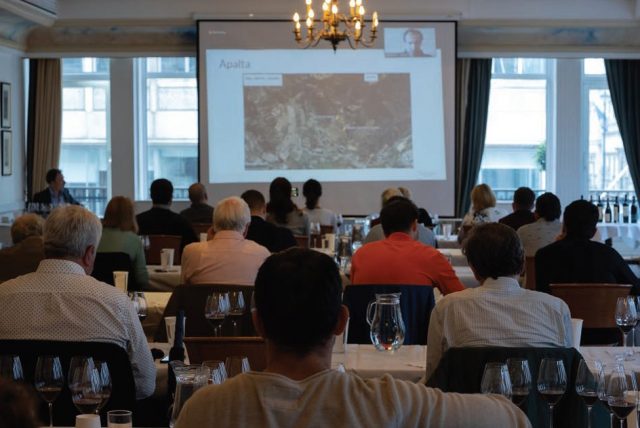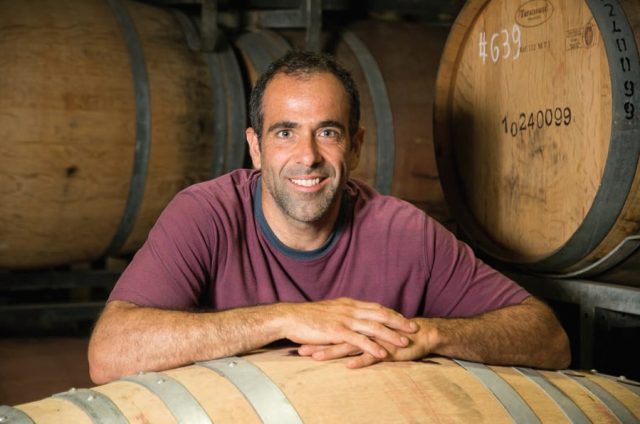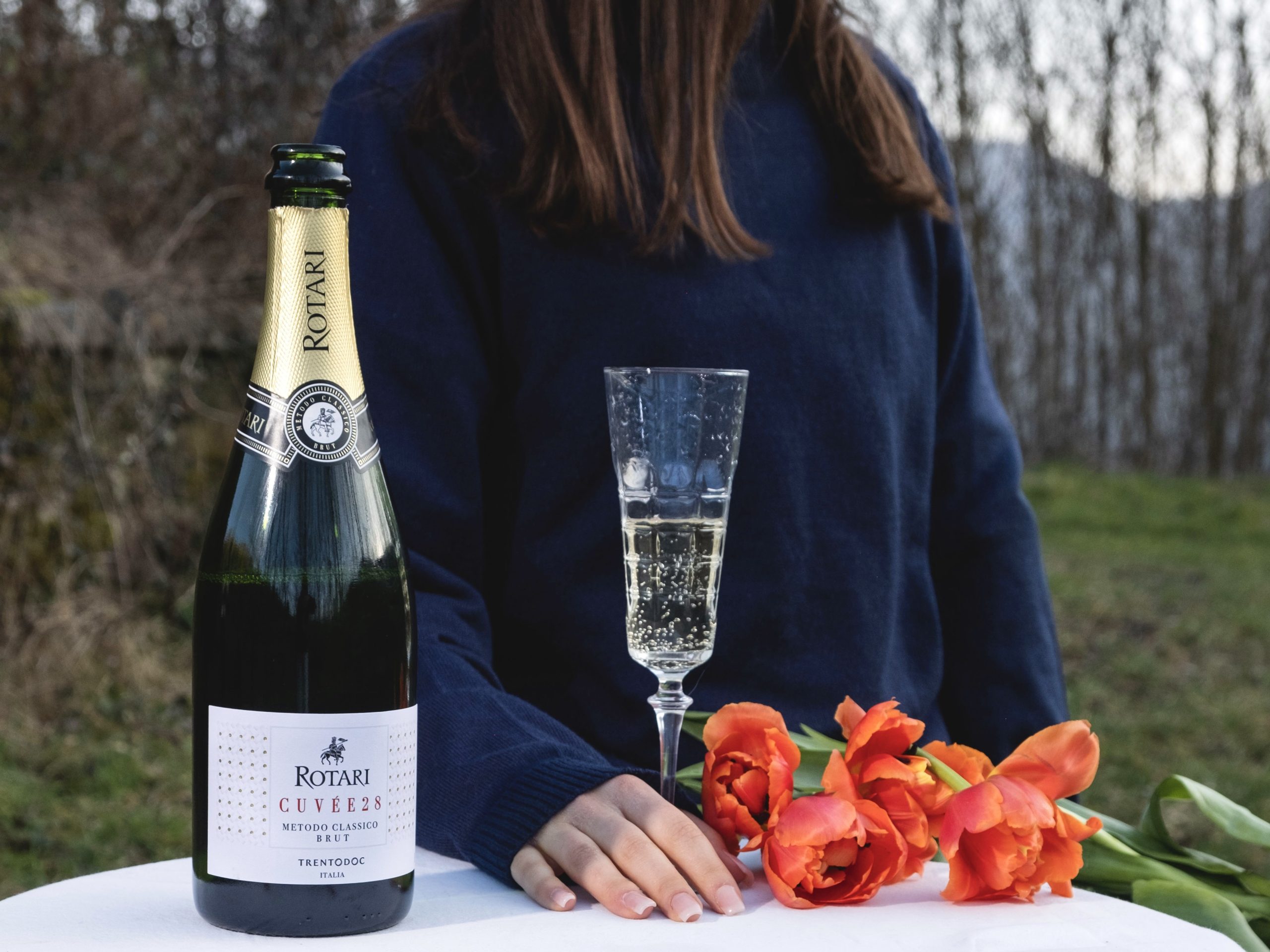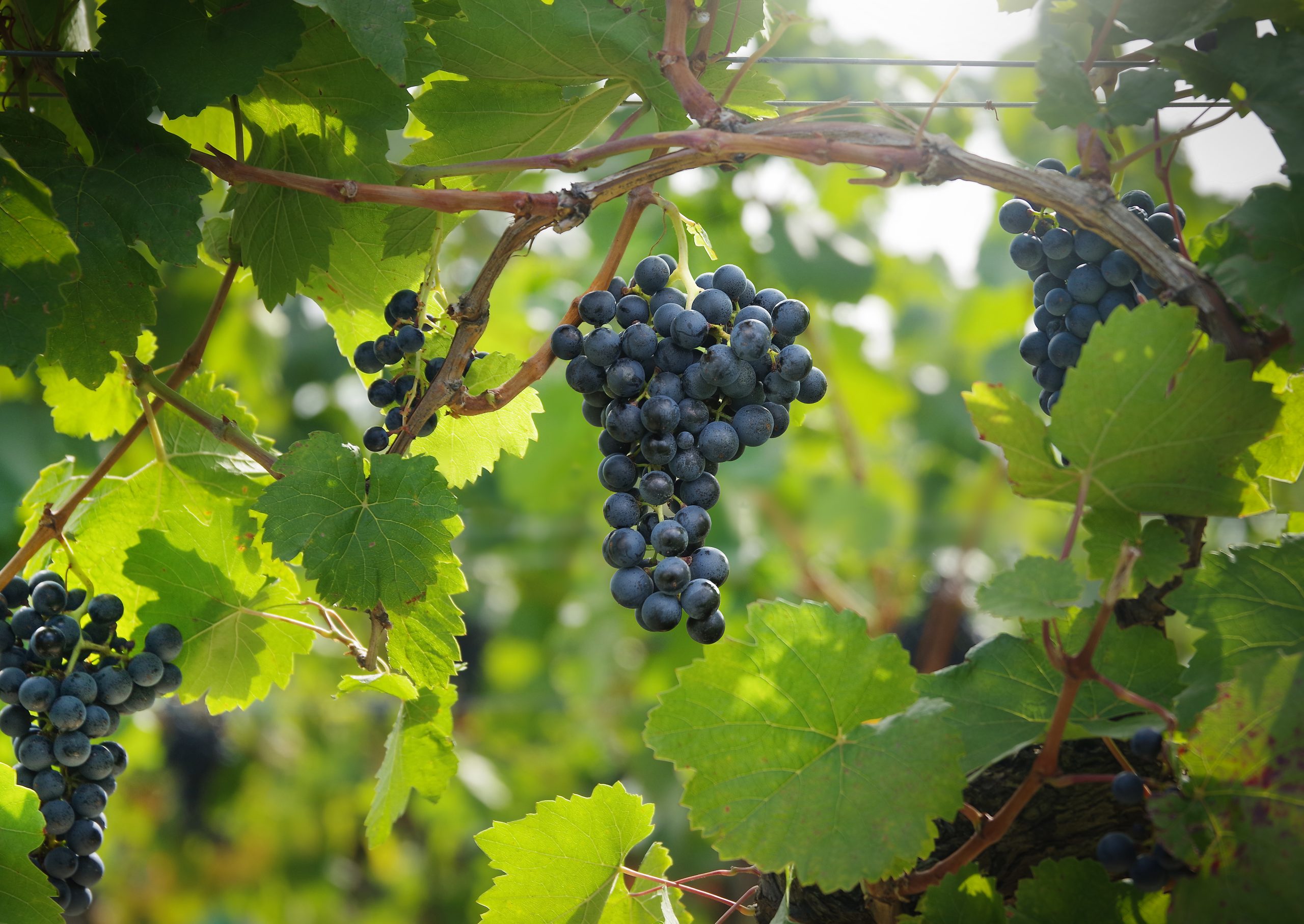Understanding Carmenère: a masterclass and tasting
Often misunderstood, and tricky to make consistently good wine from, the Carmenère grape is one that Chilean producers have taken to their hearts, as Viña Santa Rita’s Sebastián Labbé told Patrick Schmitt MW at a recent London tasting.

IT’S EXTRAORDINARY to think that a grape as ancient as Carmenère is so little understood. From the quality of the wines it can produce, to the way it should be managed, along with its correct identification, it’s a variety whose true character is shrouded in misinformation and misconceptions. For a start, it’s still wrongly labelled in major wine producing areas of the world, called Cabernet Gernischt in China, or Cabernet Franc Italiano in Italy, while, most famously, it was thought to be Merlot in Chile until its true identity was divulged by French ampelographer Jean-Michel Boursiquot in 1994. It was after this discovery that Chile embraced Carmenère as its emblematic variety, and it’s in this Latin American nation where, officially, the most plantings are found today.
Considering the lack of knowledge surrounding Carmenère’s true traits, and Chile’s leading position regarding the grape, it seemed logical to run an educational event on the variety in partnership with one of this country’s leading and most longstanding wineries, Viña Santa Rita. This took place last month in the light, large setting of London’s Army & Navy Club, where a physically-distanced tasting was comfortably possible for 30 attendees.
Introducing the masterclass, which was given by Santa Rita’s Sebastián Labbé via a live video link from Chile, I presented my own views on why Carmenère deserves to be studied more closely by the wine trade. For a start, it’s relatively uncommon, even in Chile, meaning that it offers a sense of discovery, while stylistically, it offers something appealing and unique, with a fleshy, peppery nature. Then there’s its versatility – it can be great on its own, and brilliant in blends, and, as for its quality, while Carmenère can be difficult to get right, it can produce outstanding results. Finally, Chile’s Carmenère is a taste of history: it was thought that this grape had disappeared from its homeland in Europe, then it was found in Chile, ungrafted, as a relic in this phylloxera-free viticultural haven.

Having said this, it was over to Labbé to give a detailed presentation on the grape, and the wine styles it yields. Labbé takes care of the crafting of Santa Rita’s top-end expressions, having taken on the role of ultra-premium winemaker at the group in 2017, although he’s worked for the producer since 2005.
While a native Chilean, Labbé trained as a winemaker in Lincoln in New Zealand, a country where he has done vintages, as well as in Australia. For him, so much of the story of Carmenère has centred on its discovery in Chile 27 years ago, but, as he reminded the attendees at the event, its history stretches a long way before then. He traced its past back to descriptions of ‘Grand Carmenet’ in 1785, with the first written mention of Carmenère being 1816, with a later discussion of the grape in 1824 that noted its similar quality and character to Cabernet Sauvignon, but it’s susceptibility to “blossom drop”, which can result in a poor fruit set.
NATIVE AREA
Labbé pointed out that in its native area of Bordeaux, Carmenère was cultivated in the area of Margaux, where it was well adapted to sandy and light gravelly soils, while it benefitted from long cane pruning, and did not produce good results when spur-pruned.
Then, after the phylloxera crisis in the late 19th century, Carmenère was not planted again in the Medoc, which some believe was because the variety did not take well to grafting onto American rootstocks. But Labbé attributed the change to the grape’s late ripening nature, which made it hard to reach full maturity year after year in this Atlantic-influenced climate.
Noting that Carmenère is an offspring of Cabernet Franc, he said that it can be confused with the variety in Italy, where it’s called Cabernet Franc Italiano, and around 1,000 hectares are planted, making Italy the third-biggest country for the variety after Chile and China. Due to Carmenère’s confusion with Cabernet Gernischt in China, the exact amount planted here ranges from 8,000ha to 15,000ha, while Chile officially has 10,732ha planted, according to figures from 2019.
Noting that the late-ripening nature of Carmenère makes it a suitable variety for places experiencing warming temperatures, he said that it tends to reach full maturity after Merlot, but before Cabernet Franc. In terms of soil types, Carmenère likes reasonably rich soils, and gives its best, most balanced results as an old vine. As a variety that is particularly susceptible to yielding grapes with a high methoxypyrazine content, Labbé stressed the need to harvest fully ripe grapes, and the need for plantings in “warmer areas”, and described the wine style produced by Carmenère as “towards the black end of the fruit spectrum, with black cherry, and spices, from red pepper to paprika, along with flavours of tobacco and humid forests”.

In terms of the top locations for Carmenère in Chile, Labbé was in no doubt that its preferred home was Colchagua, and above all the newly recognised DO of Apalta, although he did acknowledge the quality of the wines made from Carmenère grown in Cachapoal’s slightly cooler Peumo region. Meanwhile, Maipo’s top sites in the alluvial terraces beneath the Andes were best for Cabernet Sauvignon, encouraging Santa Rita to concentrate on this grape in this area, despite the historic presence of a lot of Carmenère in the Alto Maipo.
The grape’s stylistic developments have followed fashion, but also viticultural practices. “We are getting earlier ripening with canopy management,” Labbé said. “This allows us to produce Carmenère that is more vibrant and fresh; we were trying to make wines that were big and rich, now we are trying to make wines that are more drinkable.”
Partner Content
In terms of the Carmenère from Apalta specifically, he said: “There is a strong cultural attachment to the grape because it has been grown here over many generations, with vignerons learning how to deal with it through trial and error.” Carmenère in Apalta, particularly from the very old vineyards found here, benefits not just from the warm conditions, but also the deep, decomposed granitic soils, with a fractured granitic bedrock that the roots can penetrate, making it possible to produce Carmenère with little or no irrigation, as long as the vines are fully established. “Very warm conditions benefit Carmenère; it is definitely not a cool-climate variety, and it’s a variety that can produce unpleasant wines if it’s not planted in the right conditions, which is why it’s a challenge,” said Labbé. “People say Pinot Noir is fussy, but Carmenère is equally challenging.”
It was then time to taste a selection of Santa Rita Carmenères, which Labbé picked to show the range of styles possible with the grape according to source area, winemaking practices, and blending with complementary varieties. Starting with the Medalla Real Gold Medal Carmenère from the 2019 vintage, he said this style was deliberately made in a “richer, more old-school style”, with “very ripe fruit and soft tannins”, and sells very well in the US, Brazil and Chile. Benefitting the wine is the use of older barrels during the maturation “for an easier drinking style” and 15% Syrah in the blend to add some “floral and blueberry notes”.
AGEING WELL
Following this, the guests were served the Medalla Real Gran Reserva Carmenère from 2013, which also contained a small proportion of Syrah in the blend – “because it matches very well with Carmenère” – but has had eight years’ maturation, 10 months of which were done in French oak barrels, 25% of them new, to give some firmer tannins. “I’m happy to see how well this is ageing, with the fruit intensity coming down, and now we are getting herbal notes, tobacco and graphite,” said Labbé.

Moving onto to Medalla Real Gran Reserva Carmenère from 2019, the winemaking was similar, but this time it was blended with Carignan, in place of Syrah, with Labbé saying that the Carignan brings additional acidity, noting that the grape, along with Petit Verdot, are the best partners for Carmenère. He also said this youthful, impressively structured red benefitted from a greater percentage of press wine in the final blend than was used traditionally, while the amount of new oak had dropped to 10%. Like all the wines in the Medalla Real range, Labbé said that the wines are
made with native yeasts – “we rely on spontaneous fermentations” – while adding that “we believe in delestage [rack and return] in the early stages of fermentation, because it gives more depth and a longer taste, but we want to avoid harsher tannins, which you can get in Carmenère, even if they are more associated with Cabernet Sauvignon.”
While the wines so far had shown the quality of Carmenère from Colchagua, the next sample was chosen to showcase the brilliance of the grape when grown in the Apalta sub-region. Coming under Santa Rita’s Floresta label, which is generally used for more niche and experimental wines, he said that the grapes for this wine hailed from a “magic place”, featuring Carmenère planted between 1925 and ‘38 on “very fractured granite”.
Dry farmed, Labbé said the vineyard “caught my attention from a physiological point of view because it has a very balanced canopy, it was not
aggressive in terms of its growth rate”. The special characters of this site allowed Labbé to make a Carmenère from earlyharvested grapes, noting that the bunches were ready in terms of flavours, colour and fruit intensity by mid-February – six weeks before any other Carmenère in Chile. “Here, we want to show a picture of a particular vineyard, so it has been aged in concrete and amphoras,” he said, “with 15%-20% of the final blend in foudres”, suggesting barriques might mask the inherent traits of this unique
plot of Carmenère.

Next, Labbé decided to show how well Carmenère performs as a minor supporter in a blend, with Santa Rita’s Triple C. Using Cabernet Sauvignon and Cabernet Franc with just 7% Carmenère, all from Santa Rita’s prized vineyards in the Alto Maipo’s Alto Jahuel, he said that the grape rounds out and softens the tannins coming from the other Bordeaux varieties in the blend. “Even a small percentage of Carmenère can have a big impact in a blend like this,” he said.
Finally, he introduced Pewën de Apalta, which, in contrast with Triple C, is a pure Carmenère, and Santa Rita’s top expression of the variety. Showing two examples, one from 2013 and another from 2019, he used the wines to highlight the ageing potential of great Carmenère, but also the stylistic changes that have taken place over the past decade. While the 2013 had a touch of Syrah, and ageing in 60% new oak for 18 months, the 2019 was 100% Carmenère, which sees 40% new oak. It also incorporated a small percentage of whole berries in the fermentation, while the grapes were harvested slightly earlier.
Labbé explained: “We want vibrancy and electricity, something that Carmenère was lacking in the past, without losing the texture of Carmenère.” Acknowledging that getting the ultimate expression of varietal Carmenère has taken “years of trial and error”, he feels that today Pewën has achieved what he’s looking for from the grape, which is: “aromatic intensity, ripe fruit, velvety tannins, and, a touch of pyrazines – we are no longer scared of them, they are part of Carmenère, and can add something to the final blend”.
With that said, it was clear that the character of Carmenère had been accurately captured during the course of an hour’s tasting and discussion, taking in its stylistic evolution, while considering its role as a varietal wine, along with its contribution to blends. We’d also tasted its finest expression – Santa Rita’s answer to Petrus, using Chile’s Merlot equivalent. In short, we sponsored profile came away with a better understanding of what makes Carmenère wonderful and unique, as well as underrated, for now at least.
The wines served
- Medalla Real Gold Medal 2019
Colchagua Valley, 13.5% ABV, 85% Carmenère and 15% Syrah - Medalla Real Gran Reserva, 2013
Colchagua Valley, 14.2% ABV, 93% Carmenère and 7% Syrah - Medalla Real Gran Reserva, 2019
Colchagua Valley, 13.9% ABV, 95% Carmenère and 5% Carignan - Floresta, 2017
Apalta, Colchagua Valley, 13.2% ABV, 100% Carmenère - Triple C, 2018 Red Blend
Maipo Valley, 14% ABV, 60% Cabernet Franc, 33% Cabernet Sauvignon, and 7% Carmenère - Pewën, 2013
14.5% ABV, 92% Carmenère Apalta Valley and 8% Syrah Limarí Valley - Pewën de Apalta, 2019
Apalta, 14.2% ABV, 100% Carmenère
About the event
The masterclass, which was called Carmenère Up Close, was hosted by Sebastián Labbé (via zoom) and Patrick Schmitt MW at the Army and Navy Club at 3pm on Monday 28 June 2021.
Related news
VIK expands its WineLAB initiative to celebrate emerging talent
10 years of Tayu: Inside Chile’s most unique grower–winery collaboration




